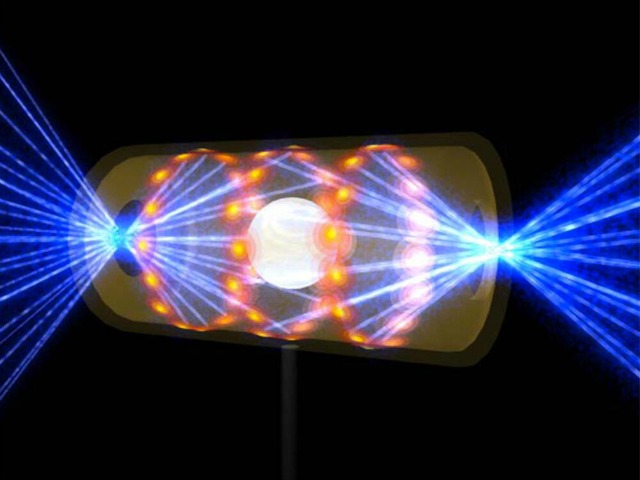LIVERMORE, Calif., July 17 (UPI) — Scientists wanted to better understand what conditions are like deep inside giant, carbon-rich planets. To find out, they blasted a diamond with the world’s biggest laser.
“The goal of the shots is to try and create planetary core conditions on Earth,” explained Ray Smith, a physicist at Lawrence Livermore National Laboratory in California. “And by that I mean very high pressure and relatively low temperature.”
Smith and his research colleagues replicated the conditions at the center of Saturn using the world’s biggest laser at the U.S. National Ignition Facility. Scientists directed the giant laser — actually 176 separate laser beams — onto a tiny sliver of diamond, compressing the diamond to the density of lead.
Though the recent experiment gives planetary scientists and astrophysicists a better idea of how matter behaves at extreme pressure, they say its not quite analogous to the formation of gas giants.
“Planets form over many millions of years, whereas the reported dynamic ramped compression procedure is over in a flash,” study author Chris Pickard, a researcher at the University College London, wrote in an article accompanying the study in the journal Nature.
“It is not clear whether these experiments, despite reaching relevant temperatures and pressures, are able to closely model the largely equilibrated, dense rocks and ices existing within giant planets.”
Still, the experiment suggests scientists are at least on the right track.
“The discovery of multiple planets beyond our Solar System, many of which are much larger than Jupiter and Saturn, has left to a dramatic change in our picture of the Universe,” Pickard explained. “Understanding the make-up and evolution of these exoplanets requires the development of theoretical models, which depend on the pressure-density equations of state of the most likely planetary materials. Until now, these equations of state have been largely determined by extrapolating from terrestrial data.”

COMMENTS
Please let us know if you're having issues with commenting.